All the Print Fits into One Incredible Machine

Extra-long Rapida presses distinguished by individual configurations and equipment options
The print and journalism aficionados are familiar with the famous slogan “All the News That’s Fit to Print”, adopted by Adolph Simons Ochs when he purchased faltering New York Times newspaper in 1896. The slogan represented his passion to set his paper apart from other competitors. The state of the art new extra-long Rapida boasts the same spirit and it is clear manifestation of new trends in in print and packaging production.
A glance around the final assembly hall at Koenig & Bauer leaves no doubt whatsoever: Rapida sheetfed offset presses, especially those in the 3b format, are again being configured with an increasing number of printing and finishing units. It is possible to marvel at combinations of printing, coating and drying units that would have been unthinkable in this form just a few years ago. All these presses are catering to the trend towards ever greater product refinement in the packaging industry. At the same time, there is growing pressure to provide complex press solutions capable of printing exactly this type of highly finished products in a cost-effective process. A further objective in many cases is to use the printed and finished cartons as ecological primary packaging and to eliminate the need for additional plastic film materials.
This trend has already become evident among the print companies that produce packaging for cigarettes for some years now. In the past, Koenig & Bauer has supplied sheetfed offset presses with 17, 18 or even 19 printing and finishing units and overall lengths of up to 35 metres for such special applications. And now other industry segments are also recognising the economic necessity of long, individually configured presses capable of handling a broad spectrum of inline product finishing. Here is an overview of the possibilities:
Straight presses with coating before and after coating in combination with cold foil application
This technology is used to produce packaging for pharmaceuticals, cosmetics and cigarettes, for example. Characteristic for these presses are the coater and two intermediate drying units immediately after the feeder and infeed. They are followed by a significant number of printing units, the first (two) of which are frequently used to apply cold foil. With the option to print multiple spot colours, or similarly to print with six or seven process colours to extend the available colour gamut, the number of printing units can easily exceed the magic figure of ten. The printing units are followed by further coaters and a corresponding number of intermediate drying units, ahead of a triple-length extended delivery (3.8 metres).
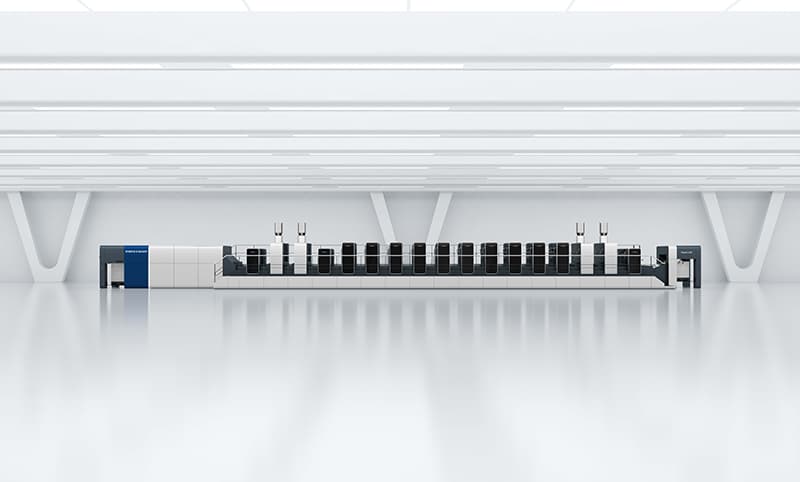
Totals of 17 to 19 printing units are currently ‘standard’ for presses like this. They are in use in a number of industrial nations in Central Europe, but also in regions where few people would expect to find such complex presses. And they have long since ceased to be one-off installations. Their number is increasing steadily. After all, these Rapida presses not only offer capabilities to combine print with high-quality and extremely versatile inline finishing (including multiple UV coatings), but also do so at above-average production speeds that can still reach 15,000 sheets per hour. The equipment package usually includes logistics solutions and a selection of anilox rollers for different coating thicknesses and types. With the AniloxLoader of the Rapida 106 X, the anilox rollers are exchanged fully automatically in next to no time. DriveTronic SFC, furthermore, enables coating formes to be changed in less than a minute – parallel to other makeready processes on the press.
Straight presses with printing units after coating
These presses are frequently chosen by producers of packaging for the food industry (and especially for bakery products and confectionery), but are also in use in the general packaging segment, for cosmetics and care products, household goods and pet supplies. They are the ideal means of production for highly finished folding cartons, sleeves and wraps: on the one hand to protect the product, and on the other hand for optimum presentation.
The eight to ten printing units are followed by a coater, intermediate drying, a further printing unit and sometimes a second coater. This permits all-over coating in the first coater, for example, and then application of a matt spot coating by means of the additional printing unit – with offset-quality registration and at favourable cost, because no photopolymer plate is required. Another benefit of this type of coating is the reliable avoidance of unsightly fringes around the coated areas. Special drip-off effects are similarly straightforward to produce. Should a classic double coating process be necessary (e.g. for metallic or haptic coatings), the printing unit can be disengaged from the production process at the press of a button and the second coater used in its place.
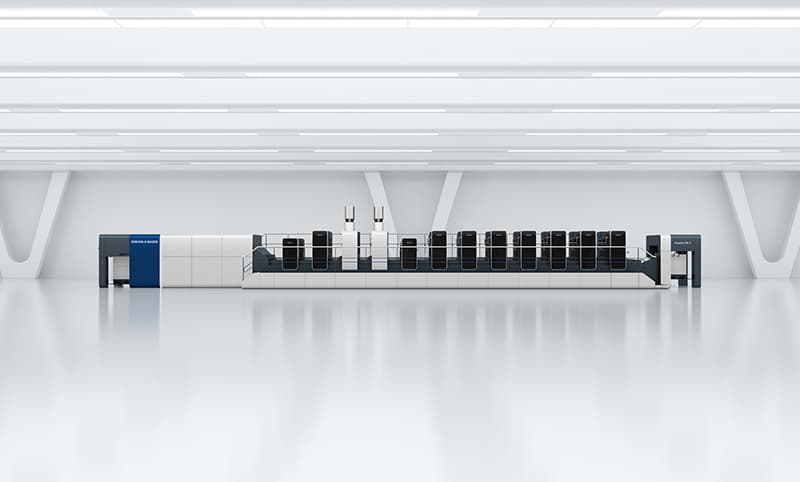
Another possibility is to prepare a currently unused coater for the next job while production is still running on the rest of the press, in order to minimise the makeready time at the subsequent job changeover.
Depending on the equipment options, the degree of product finishing and the substrates used, these presses – which can reach a length of 30 metres with their 13 units, a triple-length extended delivery, raised foundations and additional gallery – run at speeds up to 18,000 or even 20,000 sheets per hour. It almost goes without saying that they often incorporate a full package of accessories for UV finishing.
Perfector presses with printing units and coaters before and after the perfecting unit
This press configuration is also aimed at producers of packaging for the cosmetics and confectionery industries. And in this case at brand owners in particular. The classic perfector press prints one or two colours before the perfecting unit, such as a recipe or instructions for use of the product on what later becomes the inside of the packaging. This is followed by coating, drying and turning of the sheet. The image for the reverse side of the sheet – later the outside of the folding carton or box – is then printed in high colour and with a single- or multiple-coating finish to achieve interesting matt/gloss or haptic effects and thereby attract attention at the point of sale. Additional packages cater for the processing of metallised board and plastic films. The inclusion of cold foil systems with various levels of automation is also possible.
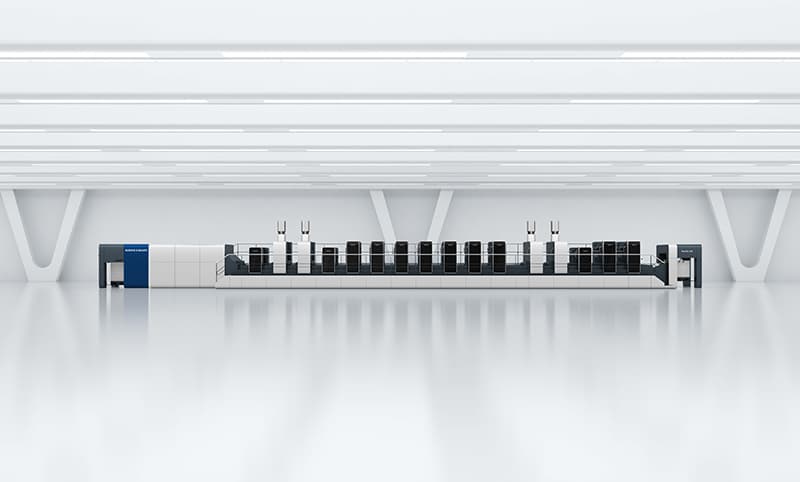
These perfector presses may well comprise 13 to 16 printing and finishing units, and also reach an overall length of 30 metres. The perfecting unit is usually incorporated after the fifth or sixth unit. Various drying technologies are possible, among them systems for dispersion coatings on the inside and UV coatings on the outside of the finished carton. Running speeds of up to 18,000 sheets per hour are achieved, depending on the substrate, the image to be printed and the process media used. Automation features for fast job changeovers (simultaneous plate and coating forme changing, AniloxLoader, CleanTronic Synchro) are examples of further efficiency-enhancing components. Application-specific logistics variants for fully automatic pile handing also deserve mention. This all means that the press is highly productive both for very long runs and where frequent job changeovers are required.
Perfector presses with multiple coating on the front of the sheet followed by printing and coating on the reverse
Two or even three coaters together with the corresponding drying facilities, a perfecting unit and then the required number of printing units, followed by one or two further coaters – that is the ultimate configuration for inline product finishing in sheetfed offset. These presses clearly illustrate: printing presses are also coating machines. After all, one of the purposes of such applications is to produce a coating that prevents moisture absorption or makes the board resistant to other substances (e.g. fats) so that it retains its form and rigidity. At the same time, the coating layers prevent the migration of board or ink constituents into the packaged food or beverage.
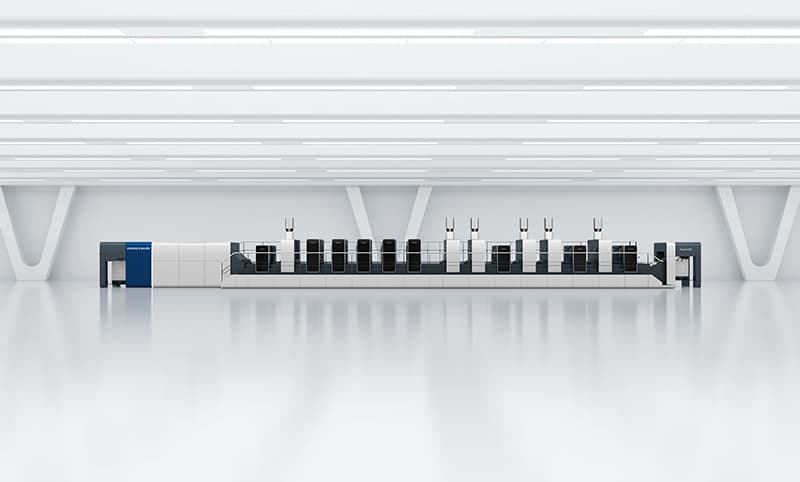
In combination with appropriate board and paper products, or laminated board types and other materials wholly suited for direct contact with foods, these presses enable very economical production of a broad range of different items: Packaging for frozen products, cake boxes, trays and cups, packaging and trays for high-quality desserts, kraft papers as outer and presentation packaging, snack boxes such as those used by fast food chains, stackable boxes and trays for catering companies or pizza boxes, to name just a few examples.
Presses in this category incorporate more coaters and drying units than printing units. Comprehensive process know-how and long-standing experience are also crucial when working with these special technologies.
Extreme specialisation for profitable production
All four trends point to the possibilities for specialisation in a certain product range within the packaging industry, as a basis for profitable, forward-looking production in this field. Like many other packaging machines, sheetfed offset presses are becoming increasingly tailored to a specific end product.

Six-, seven- and eight-colour presses, with single- or double-coating applications, still dominate today’s packaging market and while their era looks set to continue for the foreseeable future, everyone must be aware that the trend to highly complex, individually customised printing presses is gaining momentum.
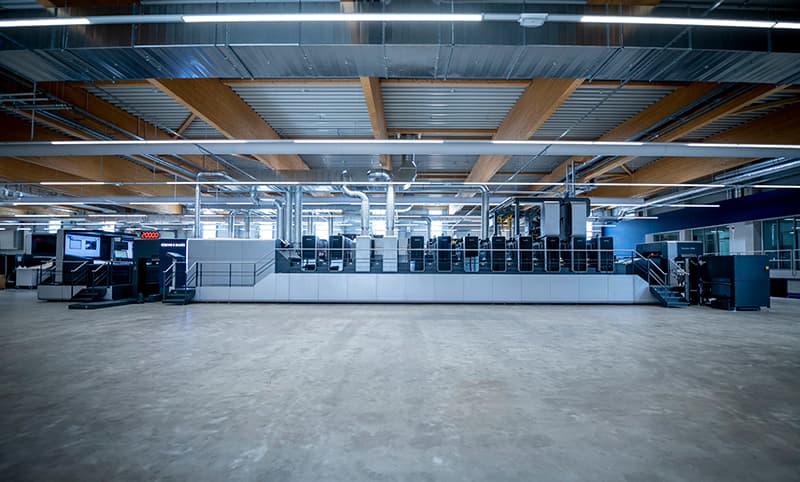
Koenig & Bauer is well positioned for this development, both in the 3b segment and in large format. With state-of-the-art Rapida technologies that define global standards in terms of production speed, ultra-fast makeready and process automation, and dominate the packaging market.





